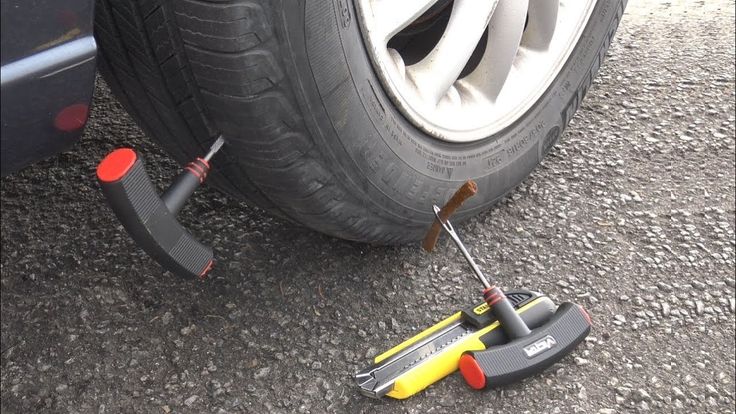Heading out the door? Read this article on the new Outside+ app available now on iOS devices for members! Download the app.
Outdoor enthusiasts are more subject than most to having to deal with a vehicle breakdown in a remote location where immediate help may not be available. Since tire punctures are by far the most common problem a vehicle will experience—and something more likely to happen on dirt roads—and since you can’t always count on your spare tire, it makes sense for us to arm ourselves with the tools and knowledge it takes to repair them ourselves. Here’s how.
How Do You Know You’ve Got a Puncture?On a paved road, if your steering wheel starts to wobble vaguely in your hands, or if you hear a loud thumping sound that coincides with your wheels’ rotation, then you’ve got a flat tire. Off-road, at lower speeds, you’ll likely hear that thumping before you feel it. In both cases, avoid risking further damage to the tire or vehicle by finding the first safe location to pull off the road or trail.
Video loading...
Don’t Rely on Your SpareIt’s become less and less common for new vehicles to come equipped with a full-size spare tire. Space savers, or donuts, are only designed to get you a very short distance at very low speeds—across town to the tire shop, basically. You should avoid using a space saver on a dirt road or trail if at all possible.
And even if you have a full-size spare with a matching tire and wheel, it’s still possible to puncture more than one tire at a time. And man, that’s going to cause a big problem if you’re not prepared or if it happens somewhere you can’t easily call for help.
What You NeedThe tools you should have to fix a flat tire yourself don’t cost much more than getting a tire plugged at a tire shop. And they’re hundreds of dollars cheaper than calling for a tow. They’re also small and light. There’s really no excuse for not carrying this stuff in your car or truck.
The best tire-repair kit I’ve found is made by Boulder Tools and costs $38. Like other kits, it includes rope plugs and the tools you need to install them, but this one goes above and beyond by including items like needle-nose pliers, spare valve cores, and a folding razor blade.
Like other kits, it includes rope plugs and the tools you need to install them, but this one goes above and beyond by including items like needle-nose pliers, spare valve cores, and a folding razor blade.
You will also need a compressor. That’s what you’ll use to reinflate your tire after you fix the puncture, or how you’ll air back up to road pressures if you’re airing down for off-road driving. If all you need is an emergency option, one of these $23 Slime compressors is perfect. It plugs into your cigarette lighter (or 12-volt outlet), so you don’t even need to open your hood. You don’t want to rely on something like this if you’re regularly inflating oversize off-road tires, but that’s a story for another time.
I also stick a can of Fix-a-Flat in every car my family owns, plus those of most of my friends. Fix-a-Flat includes both a sealant and compressed air in a single can, allowing you to take care of the kind of small punctures caused by a screw or nail without even removing the wheel.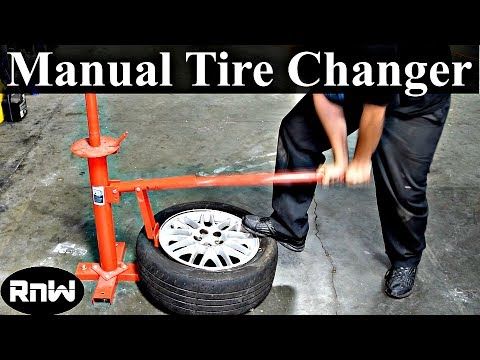 And that capability makes it a unique tool in your arsenal—one that can come in handy for even complicated repairs where it’s not safe to to try and remove a wheel or where gaining the ability to roll the car a few hundred yards can make the situation much safer (think: a steep slope off-road or the side of a busy highway, with trucks rushing past just feet away).
And that capability makes it a unique tool in your arsenal—one that can come in handy for even complicated repairs where it’s not safe to to try and remove a wheel or where gaining the ability to roll the car a few hundred yards can make the situation much safer (think: a steep slope off-road or the side of a busy highway, with trucks rushing past just feet away).
Everyone should also carry a quality tire-pressure gauge. Use it to check the pressure of your tires once a month, and adjust them to factory-recommended settings if they’re off. Ambient temperatures, elevation, and just time can all cause a tire to lose or gain pressure, and when it does so, it can harm your fuel economy, handling, and performance.
Avoid TroubleRegularly inspect your tires and replace them before the tread wears to 2/32nd of an inch deep. An easy way to check this is to insert a penny upside down into the tread (Lincoln’s head first). If the tread reaches past Honest Abe’s hairline at his forehead, you’re good. If not, order new tires. Tires worn to or past 2/32nd of an inch of tread will be much more prone to punctures and won’t provide the same grip as a tire in good condition.
If not, order new tires. Tires worn to or past 2/32nd of an inch of tread will be much more prone to punctures and won’t provide the same grip as a tire in good condition.
Tires also have a maximum life span of six years. To determine how old your tires are, look for the tire identification number on the sidewall: it begins with DOT, is 11 digits long, and ends in four numbers. The first two digits of those last four numbers represent the week (of 52 in a year) the tire was manufactured. The last two are the year.
If your tire shows any signs of cracking or tearing, or if anything white or metallic has worn through the rubber, replace it immediately.
You also need to make sure you’re using an appropriate tire for the conditions you’re facing. If you’re traveling off pavement, a quality all-terrain tire will help you avoid punctures both in the tread and, more importantly, the sidewall.
Make sure any vehicle you’re driving has all of the necessary tire-change tools present and accounted for.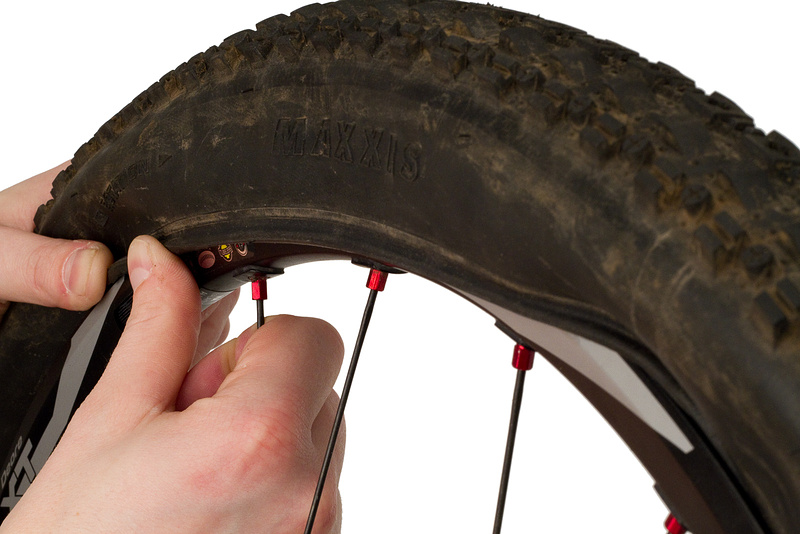 You’ll need a lug wrench and a jack at a minimum. Don’t be that person who forgets to put them back into a car. I even check for these things in rental cars before driving off—they’re that essential.
You’ll need a lug wrench and a jack at a minimum. Don’t be that person who forgets to put them back into a car. I even check for these things in rental cars before driving off—they’re that essential.
Once you’re in a safe place, hop out of the car, and find the flat tire. Try to identify the source of the puncture. Sometimes a foreign object will be very obvious at just a glance. Sometimes you’ll need to roll the car a foot or two to expose the problem.
If you are able to see that there’s obviously a nail or screw embedded in your tire’s tread, that’s good news. If the nail or screw is strongly embedded into the tire’s tread, there’s no need to remove it at this time. Get out your can of Fix-a-Flat, follow its directions to connect it to your tire valve, and empty the entire contents of the can into the tire. You should see the tire visibly inflate.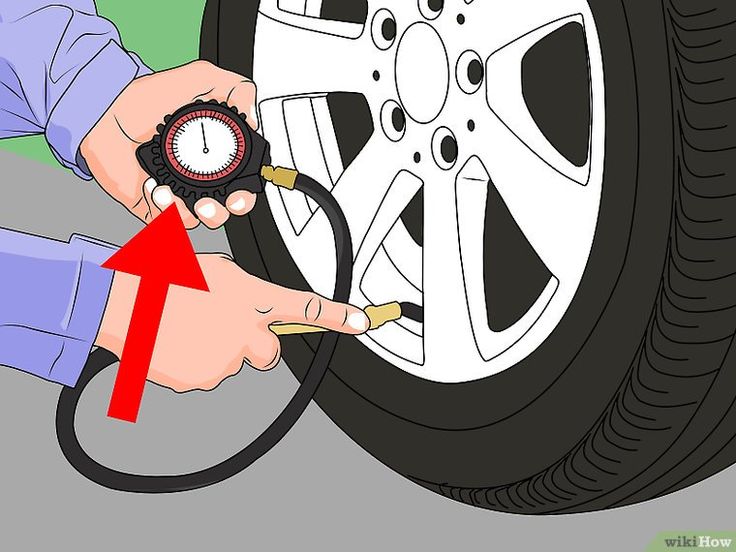 If it returns to normal, drive off immediately, go a few miles, then stop and check your tire pressure, adjusting it if necessary. If the tire seems to be holding air, you’re good to continue driving, but take a look at the tire any time you stop. When you get back from your trip and have the time, go ahead and follow the rest of the steps here to repair the puncture with a plug.
If it returns to normal, drive off immediately, go a few miles, then stop and check your tire pressure, adjusting it if necessary. If the tire seems to be holding air, you’re good to continue driving, but take a look at the tire any time you stop. When you get back from your trip and have the time, go ahead and follow the rest of the steps here to repair the puncture with a plug.
If you can’t find the source of the puncture, if it’s an exposed hole, or if you don’t have a can of Fix-a-Flat, you’ll need to take the wheel off.
Step Two: Remove the WheelFirst, remove your spare (even if it’s a space saver), and place it under the frame of your vehicle in front of the front tire or behind the rear tire. That way, if your vehicle falls off its jack, it will fall onto the spare, minimizing injury to you and damage to the car.
Loosen the lug nuts before you raise the vehicle. Remember: lefty loosey.
Next, follow the instructions in your owner’s manual to locate and use the jack accordingly.
Once the wheel is off the ground, finish removing the lug nuts. Put them somewhere safe. Pull the wheel out toward your body. Be careful—wheels can be heavy.
Step Three: Evaluate the PunctureIf you have a hole in your tread, it can be fixed. Tires in good condition won’t experience more than a simple hole in that location. If the hole is in your sidewall (the portion of the tire that rides roughly vertical), you just need to mount your spare and have the tire replaced at the first possible opportunity.
If the hole is in the tire’s tread and can’t be taken care of by simply dumping a can of Fix-a-Flat into it, roll the tire around to the back of your vehicle where tools are and where you can safely work away from traffic. Look for holes and foreign objects as you roll it. If a hole is small and the tire is no longer leaking air, it may be a good idea to mark the hole for easy reference later.
The recommended kit includes these needle-nose pliers; otherwise, a multitool is a good stand-in. (Nathan Norby)Step Four: Remove the Problem
(Nathan Norby)Step Four: Remove the ProblemIf there’s a foreign object in your tire, and the tire can no longer hold air, remove it. In the video, I used a screw gun to put the screw in the tire, meaning its threads engaged with the rubber and steel belts. Most roads don’t have their own screw guns, so the puncture won’t engage the threads in the same way, and it should be easier to pull out using your needle-nose pliers.
I’ve seen tires punctured by everything from a steel bar to a particularly nasty cactus barb. Organic objects like tree branches can leave residue behind. Try and get all of that out of the way.
The reaming tool will slowly enlarge and clean the hole. (Nathan Norby)Step Five: Enlarge the HoleIf the hole is larger than a pencil, skip this step. If not, grab your tire-repair kit’s reamer, and use it to enlarge the hole until it is roughly the size of a pencil.
If you have a very small hole, this will be difficult at first. Install the reaming tool by slowly screwing it into the tread while applying downward pressure. Otherwise, just push the tool into the hole all the way up to the handle, then yank it out. Repeat until the hole is large enough that you can insert and remove the tool without much effort.
Install the reaming tool by slowly screwing it into the tread while applying downward pressure. Otherwise, just push the tool into the hole all the way up to the handle, then yank it out. Repeat until the hole is large enough that you can insert and remove the tool without much effort.
Remove a rope plug from the plastic wrapper, flatten one end with the needle-nose pliers, and push it through the eyelet on the installation tool. Grasp the protruding edge of the plug with the pliers, and pull it through the eyelet until equal lengths of the plug protrude from both sides.
Grab a finger of lube from the kit, and apply it to the plug and leading edge of the tool.
Firmly push the installation tool in as far as it will go, then yank it out as hard as you can.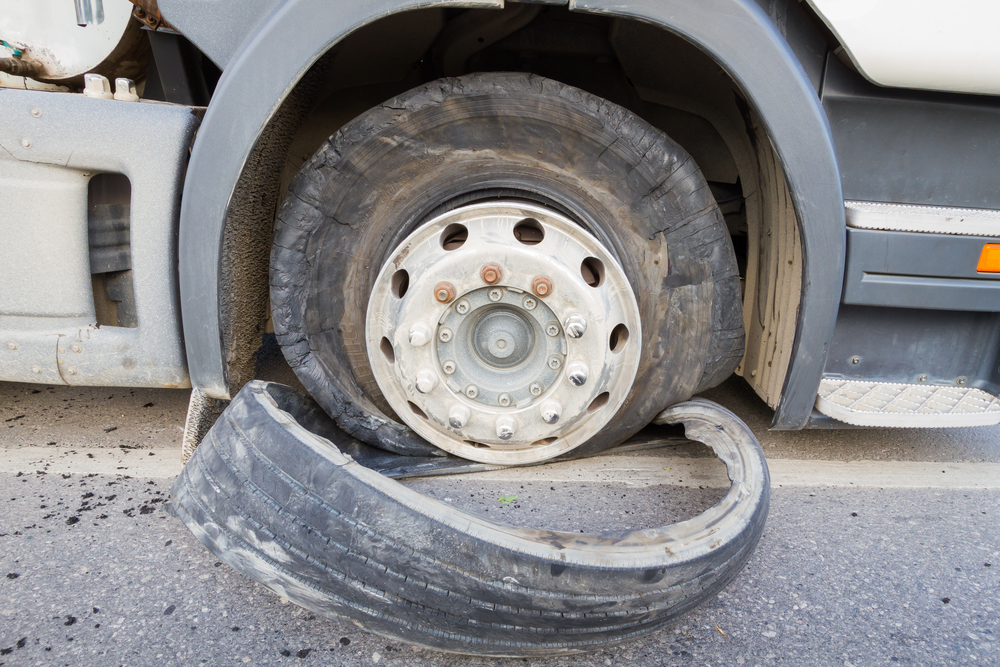 (Nathan Norby)
(Nathan Norby)Place the tool tip down on top of the hole in the tire, grasp the tool securely with both hands, and force it through the tire until the depth guide is flush with the tread. Then yank the tool straight out of the hole as hard and fast as you can. The rope plug should pass through the eyelet and remain inside the tire.
The plug should remain in the tire when you yank the tool out. Now just trim off that excess length. (Nathan Norby)If you have only a small puncture, one plug should do. If not, you may need to install a second or third. If you must install multiple plugs, then plan on taking that tire to a shop the first possible opportunity, where it can be evaluated for safety. You may have to replace it. But most of the time, that single plug will be enough. Use the razor to trim the excess length flush with the tire tread.
If your tire holds air up to the recommended pressure, then odds are it’s going to be good to go. Just check the pressure again after a few miles to make sure. If for some reason you’re losing a little air around the plug, try adding Fix-a-Flat. (Nathan Norby)Step Eight: Reinstall the Wheel
If for some reason you’re losing a little air around the plug, try adding Fix-a-Flat. (Nathan Norby)Step Eight: Reinstall the WheelUse your air compressor to inflate the tire to the recommended pressure. (You’ll find that listed inside the driver’s doorjamb.) Once inflated, reverse the tire-removal steps described above to reinstall the wheel. First, install the lug nuts by hand to secure the wheel to the hub. Then, once you’ve lowered the vehicle back down and removed the jack, use the lug wrench to make sure all the lug nuts are as tight as possible. Tighten them in a star pattern, so the wheel snugs back to the hub evenly. Remember: righty tighty. Check these again later that day.
Return all your tools, the jack, and the lug wrench to their proper locations. You’d don’t want to misplace this stuff.
And that’s it. No tow truck. No hiking out a dirt road in search of help. No waiting on AAA while sitting on the side of a busy highway. No huge expense. And no more than a few minutes of hard work.
And no more than a few minutes of hard work.
So, you have a flat tire or one that’s leaking air. It’s not the end of the world. Luckily there are safe and cost-effective ways to properly repair most tire punctures. The purpose of this article is to show you the difference between a safe, permanent repair and a temporary string, plug or patch repair.
According to the National Highway Traffic Safety Administration (NHSTA) and the Tire Industry Association (TIA), the only method to properly repair a tire puncture is to fill the injury with a repair stem and back the stem with a repair patch. This is commonly known as a combination repair or a patch/plug repair.
Patch/plug repairs are most often performed using a one-piece repair unit that combines the repair stem and cap (or patch) into one unit. However, special circumstances may require the use of a two-piece combination repair (ex. If the angle of the puncture exceeds 35 degrees).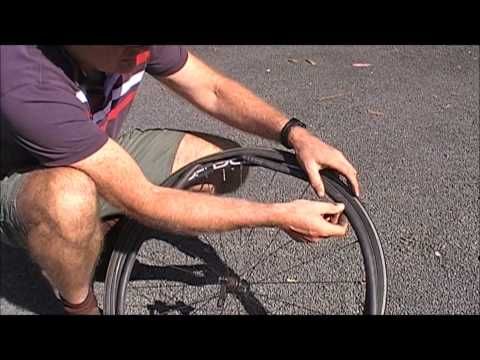 The repair is then permanently bonded to the inside of tire and through the injury channel using a cold, chemical vulcanizing process. The repair essentially becomes part of the tire, creating an air-tight seal that keeps air in and moisture and contaminants out (more on this procedure below).
The repair is then permanently bonded to the inside of tire and through the injury channel using a cold, chemical vulcanizing process. The repair essentially becomes part of the tire, creating an air-tight seal that keeps air in and moisture and contaminants out (more on this procedure below).
Emergency roadside plug repairs are NOT intended to be a permanent tire repair. Plugs and string repairs are designed to get you back up and rolling long enough to get home or to the nearest service center to perform a proper tire repair.
The common misconception with plug and string repairs is that because they hold air, they are safe to use. While it is true that many plug repairs do a great job of keeping air in the tire, that’s only part of the equation. Because they’re not completely sealing the injury, plug repairs may allow air and moisture to penetrate the body of the tire. Over time, this could lead to a dangerous (or even deadly) blowout.
A tire repair that uses only a patch is also NOT considered proper or safe. A properly installed patch will do a great job of allowing the tire to hold air. However, similarly to the plug-only repair, the patch does not fill the injury channel. Therefore, air and moisture could seep into the tire from the tread surface and eventually damage the tire.
The Proper Tire Repair Process According to Industry GuidelinesOnly a proper patch/plug repair completely seals the puncture from inside the tire and through the entire injury channel. There are a few extra steps necessary to perform a proper tire repair in accordance with industry guidelines. We’ve developed a simple acronym to help organize and remember the steps: R.E.P.A.I.R.
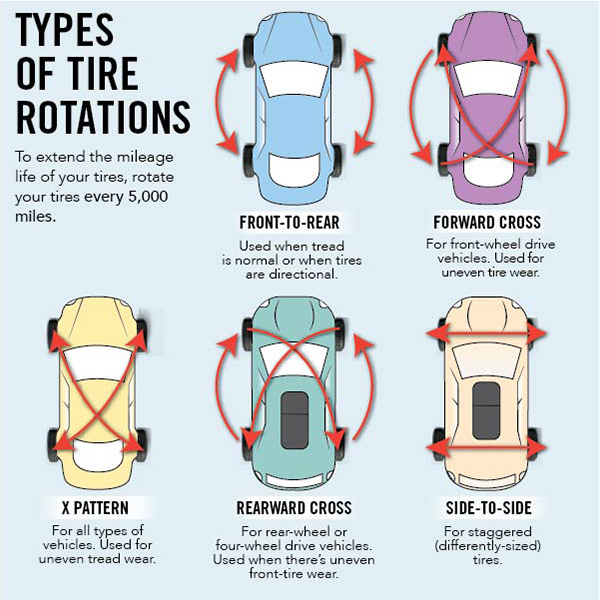
 The over-buffed area of the inner liner is treated with a thin layer of rubber sealant, and the excess repair is trimmed to approximately ¼” above the tread surface.
The over-buffed area of the inner liner is treated with a thin layer of rubber sealant, and the excess repair is trimmed to approximately ¼” above the tread surface.There are a number of factors that may determine whether or not your tire is safe to repair. These factors fall into three main categories:
 Excessive wear, casing separation, impact damage and other conditions may make it unsafe to properly repair your tire. For a more comprehensive list of repairable vs. non-repairable conditions visit our blog Can Your Tire Be Repaired?
Excessive wear, casing separation, impact damage and other conditions may make it unsafe to properly repair your tire. For a more comprehensive list of repairable vs. non-repairable conditions visit our blog Can Your Tire Be Repaired?The occasional flat or leaky tire is an unavoidable part of life. But, taking shortcuts to repair it can be dangerous to you and your passengers. Take the time and do the research to do the job right and/or find a reputable tire repair shop trained in proper tire repair procedure.
Most often, we ourselves are to blame for the fact that the tires become unusable. But this can be avoided.
You have never seen such tires: even the police were surprised
In the process of using the tires, various damages can occur, most of which are the fault of the driver. As a result, rubber is wasted, and since the law prohibits the use of different tire models on the same axle, you have to spend money on replacing the second tire.
The most common damage is puncture . This is the most harmless type of damage, but only if you notice it in time and repair it right away. It is absolutely impossible to drive on a flat tire, even a couple of meters! The damage caused by running on a flat tire or low pressure is catastrophic. This causes the sidewalls to deform more than they should, which causes the tire to overheat, delaminate, and the carcass becomes unusable due to broken cords. As a result, the tire will have to be thrown out. In addition, the edge of the rim can also be damaged.
There are two types of punctures: with and without cord damage. To determine this, it is necessary to remove what pierced it. If the edges of the puncture tightly converge, then the cord is not damaged and it will be possible to repair the tire without removing it from the disk. Otherwise, if the edges do not converge, you will have to disassemble the wheel and make repairs to strengthen the frame from the inside.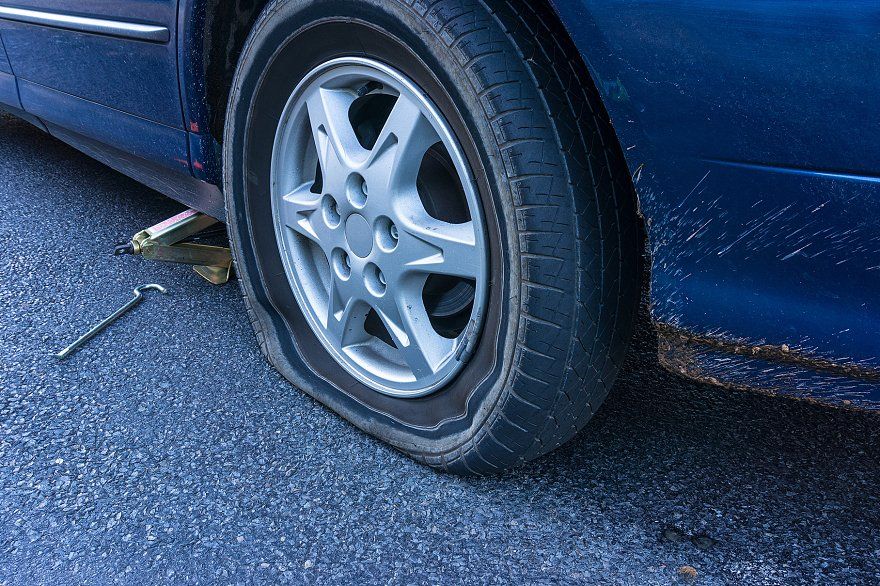 Alternatively, in the field and in the absence of a spare wheel, such a puncture can be repaired without removing the tire from the disk, after which you can carefully drive to a tire fitting or garage and make a full repair.
Alternatively, in the field and in the absence of a spare wheel, such a puncture can be repaired without removing the tire from the disk, after which you can carefully drive to a tire fitting or garage and make a full repair.
Is it possible to inflate a wheel without a compressor - the experiment "Behind the wheel"
When repairing, the puncture site must be cleaned and marked. Further, it all depends on what kind of repair kit you have - as a rule, instructions are attached to them. There are sealants that are poured into the tire through the nipple, after which the wheel turns with the puncture down and the substance seals the hole. Repair with a tourniquet or insert is somewhat more complicated, but also more durable: the edges of the hole are polished with a special tool, after which the tourniquet treated with a special compound must be inserted into the tire through a puncture with a special awl, pulled out (not completely) out and cut flush with the surface.
In case of cord damage due to a puncture, the tire must be removed from the rim in order to install a reinforced patch with additional cord on its inner surface. One of the sides of such patches has an adhesive layer that promotes cold vulcanization. After such a repair, wheel balancing will be required. To seal punctures from the inside, patches in the form of a mushroom are also used, with a leg that goes into the puncture. Such patches are also covered with a special adhesive composition for cold vulcanization.
Cuts or holes , unlike punctures, are not repairable, as they violate the integrity of the frame, which can no longer be strengthened. In addition, breakdowns are always sudden and occur on the go: the tire abruptly loses pressure and before the car comes to a complete stop it has time to make several turns "on the rims", which breaks the cord and destroys the layers. It is not recommended to use such a weakened tire, even if it was possible to repair and strengthen the rupture or cut, in the future.
8 tire storage rules - do you follow them all?
Incorrect storage of tires can cause cracks . The danger of such damage is that moisture enters the cord through cracks, which renders the frame unusable. In addition, air can escape through cracks. Unfortunately, cracks are not repairable, and tires with them will not last long: sooner or later they will deform, become covered with swellings due to rusted and torn cord or because of driving with pressure below the recommended one.
Blisters or bulges can appear on a tire for a variety of reasons - it always happens due to a broken cord or delamination in the carcass. In the first case, an obstacle was hit and the impact broke the cord or the cord was cut through with a sharp object. In the second case, there is no damage on or near the hernia, which means that it appeared either due to a factory defect, or due to frequent driving with pressure below the recommended one. The danger of hernias is that they can explode at any time and provoke a skid, which will lead to an accident. If there is nothing to replace a tire with a hernia, then it is better to rearrange it to the rear axle and drive very carefully. Like fissures, a hernia cannot be repaired. Sometimes small blisters resulting from impacts or cuts are reinforced with reinforced patches, but there is no guarantee that the tire will not explode. Therefore, tires with hernias are recommended to be replaced immediately.
The danger of hernias is that they can explode at any time and provoke a skid, which will lead to an accident. If there is nothing to replace a tire with a hernia, then it is better to rearrange it to the rear axle and drive very carefully. Like fissures, a hernia cannot be repaired. Sometimes small blisters resulting from impacts or cuts are reinforced with reinforced patches, but there is no guarantee that the tire will not explode. Therefore, tires with hernias are recommended to be replaced immediately.
Tire blackening - 6 ways to polish your tires. Inexpensive!
Tire sidewalls can be damaged by rubbing against curbstones or the asphalt edge when driving onto the side of the road. If you are prone to such a driving style, then it is recommended to inspect the inner and outer sidewalls from time to time and, if abrasion is found, swap the wheels in order to prevent the cord from being exposed - the rubber thickness on the sidewalls is small (1. 5-3 mm), and it can be rubbed to the frame very quickly.
5-3 mm), and it can be rubbed to the frame very quickly.
Often the cause of tire damage can be poor-quality tire fitting , during which the bead ring was damaged. In this case, the tire loses its geometry and “sits” crookedly on the disk - it writes “eights” during rotation, and lateral vibration appears during the ride. It is impossible to repair such a tire - you need to replace it with a serviceable one as soon as possible, until it damages the suspension: traction, hubs and bearings.
You can find out whether you use tires correctly and what invisible damage they have received by the characteristic wear of the tread, the varieties of which are collected for convenience in the table:
Shoulder wear on both sides
Driving with less than recommended tire pressure.
Inflate the tires to the pressure recommended by the automaker (a plate with recommendations is attached in the driver's door opening) and find the cause of the fall: puncture, cracks, hernia, nipple, rust on the rim of the disc in the place where the tire fits, etc.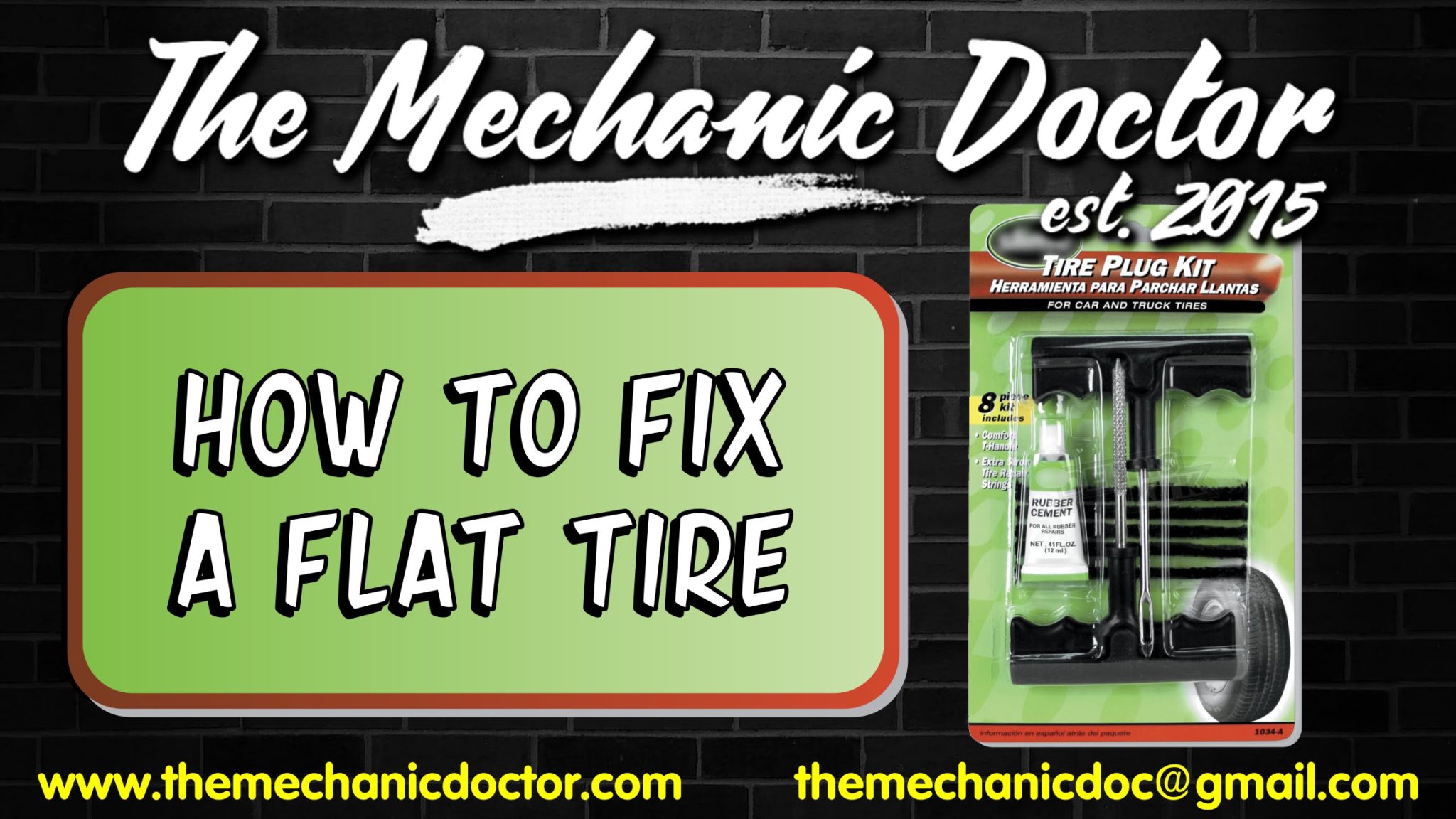
Center wear
Tire pressure too high.
Reduce the pressure to the recommended (indicated on the tablet in the doorway of the driver)
Distance in the form of rings and furrows
can be found on trailers or rear wheels of pickups and vans due to vibrations and vibrations and vibrations and vibrations and vibrations due bouncing at high speeds.
Changing wheels on a loaded axle to equalize wear, driving with a heavier load.
Chipped wear with cuts
Frequent wheel spin on rocky surfaces.
Move the wheels to a non-driving axle, use the gas pedal more carefully when starting to move.
Photo: Petr Urbanek / Unsplash
We wish you never need our advice! But we strongly recommend stocking up with a suitable repair kit.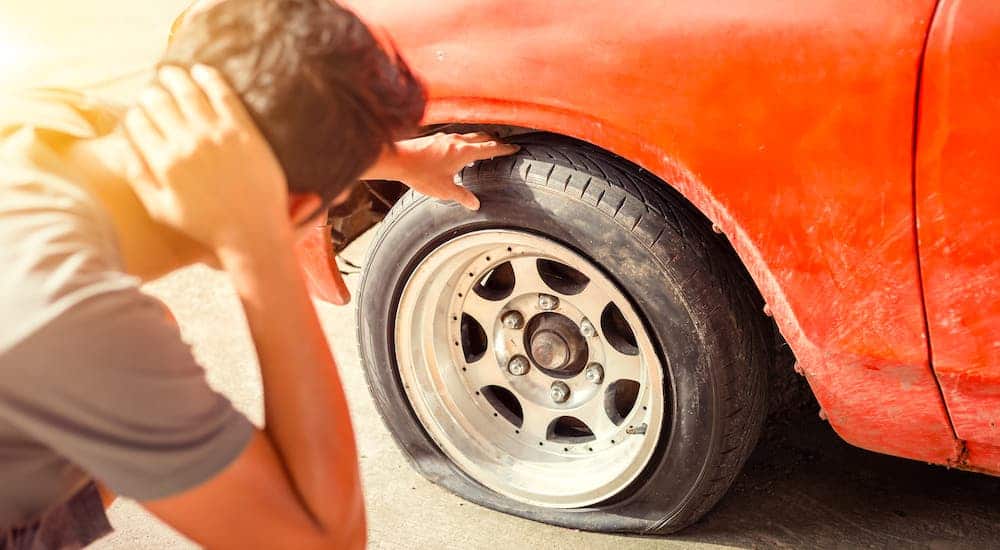
A tire repair kit is a must have in the trunk - you never know when you might need it. Our test of 14 repair kits will help you choose the one that suits you, and to repair a cut or puncture - the advice of experts from "Behind the wheel".
Tire repair kits - examination "Behind the wheel"
Roads in your area are finally getting fixed - all the details Fines will be linked to a minimum wage (or other calculated value) New driver fee in 2022
Tire pierced: 6 solutions (without removing the wheel)
All kits are sold either in a blister pack or in a plastic bag. However, even in the store you can inspect the working surfaces of the tools and make the right choice. The flagellum installation kit usually includes two tools: cleaning , which cleans a hole in the tire, and an awl with a hole - actually for inserting a tourniquet.
Cleaning, it is also cleaning or, even more simply, a picker, there are three types. A multifaceted workpiece curled with a spiral cleans the hole from dirt quite well and does not injure the metal cord at all. Cleaning with an oblique notch resembles a rasp. If its teeth are not too sharp, then it can also be used, but the supply of glue into the hole will be worse.
Cleaning with sharp aggressive teeth is strongly discouraged. It is very difficult to use it, while something constantly crunches, but this is the cord of your tire!
If you want to pump up a wheel, jack up the car! Debunking the Myth
From cleaning to an awl with a slotted eye of the needle.
The forked tip must be sufficiently sharp and the gap between the halves minimal, otherwise it will be difficult to insert into the hole. There is a risk that the metal cord thread will fall into the slot. The hole for threading the flagellum should have non-sharp edges.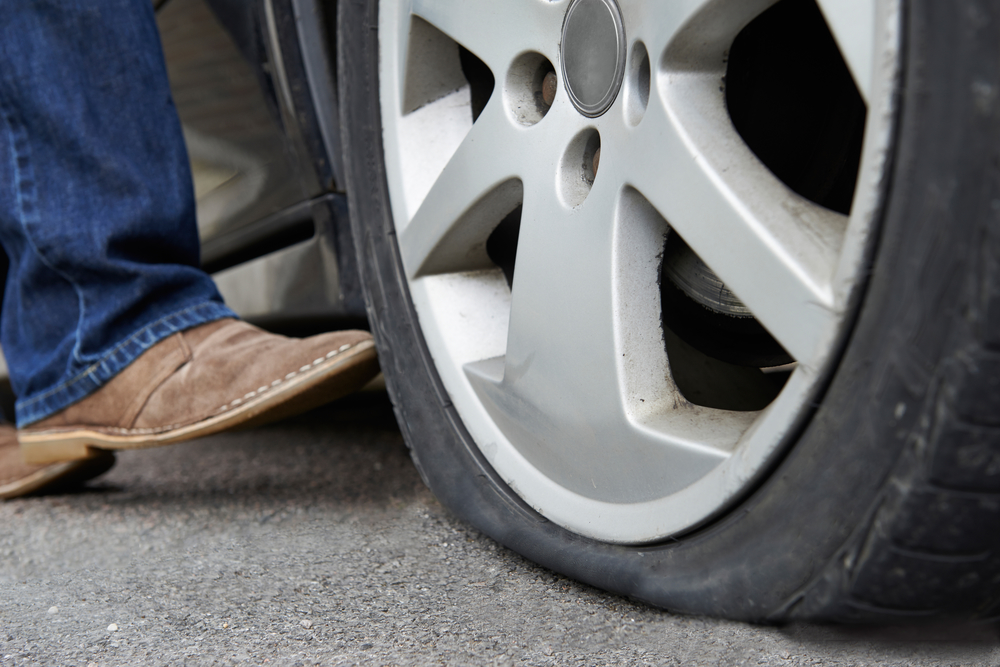 And, most importantly, see if it will be easy for the flagellum to exit through the slot already inside the tire. For convenience, you can file the exit from the ear with a file, getting the perfect profile.
And, most importantly, see if it will be easy for the flagellum to exit through the slot already inside the tire. For convenience, you can file the exit from the ear with a file, getting the perfect profile.
The most comfortable tools are those with a T-handle.
How to inflate a wheel without a pump? 5 myths and 2 risky ways
It is better to take thicker flagella. To the touch, even through polyethylene, they should be soft.
With glue, the installation of flagella is easier and more reliable - when pulling out the awl, it works like a lubricant, making it easier to move. The tube should feel heavy, indicating that the contents have not dried out.
In extreme cases, any flagella can be installed without glue, moistening them with gasoline.
Repaired a tire - does it ride differently now? Expert answer
Without compressor there is no point in starting work. To find a hole, if it was left by a nail in the board, and not by a self-tapping screw left in the tire, water, preferably soapy , will help. It is sometimes very difficult to remove a self-tapping screw, so pliers will come in handy. When the flagellum is already installed, the tails protruding outward should be cut flush with the protector. A knife , as it turned out, is rarely included in the kit.
To find a hole, if it was left by a nail in the board, and not by a self-tapping screw left in the tire, water, preferably soapy , will help. It is sometimes very difficult to remove a self-tapping screw, so pliers will come in handy. When the flagellum is already installed, the tails protruding outward should be cut flush with the protector. A knife , as it turned out, is rarely included in the kit.
